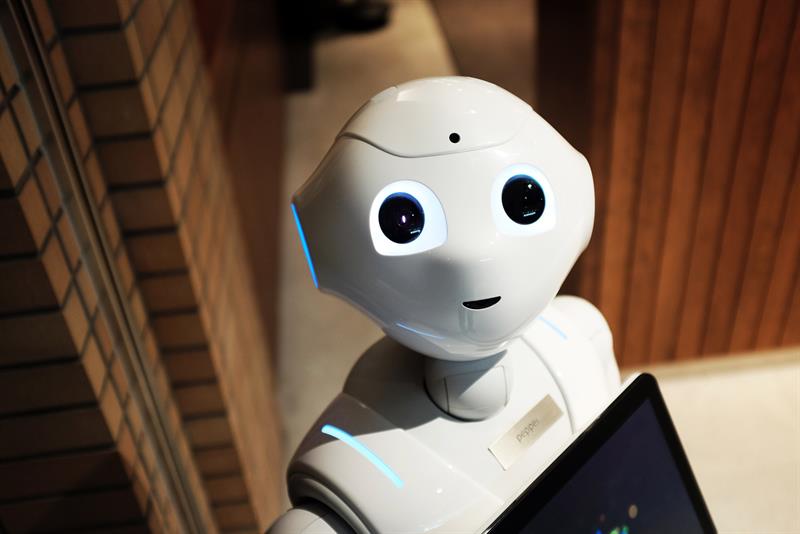When does automation become robotics?
The reality is that robotics – or at least advanced automation – has been widely used in manufacturing since the 1970s.
Robotics is automation plus AI. It’s the recent advent of the Internet of Things (IoT) and machine learning that is increasingly making today’s robots so useful and, for some, such a threat.
The difference between robotics and automation is one of degree: automated machines perform a single set of operations, but robots can smartly change their behaviour – by learning from sensory feedback or data feeds – to achieve better efficiency.
A brief history of robots in manufacturing
- George Devol applied for the first robotics patents in 1954, and his company, Unimation, was using robots in the factory by 1956.
- Automotive production lines were early adopters. They used machines to carry out repetitive processes which require high amounts of consistency, such as spot welding and spray coatings.
- Sophisticated robotics in warehouses have been directing goods for dispatch for many years.
Today, robots are widely used in manufacturing, assembly and packing, transport, earth and space exploration, surgery, weaponry, laboratory research and mass production.
In the EMS industry, printed circuit boards are almost exclusively manufactured by pick-and-place robots, typically with SCARA manipulators. As electronic components get smaller, the need for smarter robots increases.
Today there are more than 2 million industrial robots in use – and it’s expected there will be 3.8 million by 2022.
The biggest industrial uses of these are:
- Automotive 33%
- Electronics 32%
- Machinery 12%
- Rubber and plastics 5%
- Food 3%
Robots in electronics manufacturing
With the disruptive force of robots bearing down very heavily on the electronic manufacturing industry, now is a good time to take stock and review exactly what robotics is bringing to the table.
In relation to PCB manufacturing, robots can place hundreds of thousands of components per hour, far out-performing a human in terms of speed, accuracy, and reliability. As electronics shrink in size, the precision of robotic production methods becomes essential. Robots can do much more than just build, place and weld.
They can also quickly and accurately check all the components to ensure they match the required spec and are placed accurately.
Add into the mix IoT sensors and the benefits really stack up. Using data from connected, always-on devices robots can respond to situations in real time, becoming smarter and more aware. A robot can speed up or slow down based on its surrounding or the timings of small-batch production cycles and it can collaborate with other robots to work more intelligently.
Here are some of the benefits that robots are already delivering:
- They can work in dangerous environments.
- They can work faster and with more precision.
- They can create efficiencies throughout the manufacturing process.
- They can operate 24/7 for continuous production.
- They can perform complex functions that are essential for the latest generation of smaller products.
 Why are we still afraid?
Why are we still afraid?
Despite these advantages, there remain fears that continue to hold back electronic manufacturers from embracing robots.
1. Robots will steal our jobs
The cost-efficiencies of robots can help companies become globally competitive once more, by reversing the offshoring trend by creating jobs and reshoring manufacturing work.
Robots protect workers from repetitive, mundane and dangerous tasks, while creating more desirable jobs, like engineering, programming, management and equipment maintenance.
Robots will not steal our jobs. They will enable us to gain new skills and compete more effectively for work we had lost.
2. Robots are too expensive to invest in
Robots’ throughput and output gains tend to achieve ROI for manufacturers quickly, often within two years.
Manufacturing robots are much more affordable today as standard robot models are now mass-produced. Robotics as a service (RaaS) lowers the entry barrier further through rent-based pricing.
3. Robots will destroy established work cultures
This fear is well-grounded: fully integrating robotic solutions often requires fundamental changes to the way businesses operate. This disruptive potential may entail changes to software platforms, material consumption, supply chains, ERP, MRP and even the working culture of a business. Yet, these changes are for the good. They introduce enhanced capabilities, realise efficiencies, result in cost-savings and create better products.
How Chemigraphic uses robotics
Electronics manufacturers can continually enhance and improve the services they offer. Robotics and IoT are a part of this, but it’s the investment in skills, talent and staff that will optimise these new technologies.
- Additive manufacture is already commonplace for Chemigraphic in areas such as enclosure development, specialist antennas and waveguides.
- Our Design Centre collaborates closely with our customers to take advantage of new technologies.
- Our inspection tools are automated and sophisticated, offering 3D scanning and X-Ray.
- Wireless monitoring systems are used to remotely check a range of conditions, including stock on shelves, reels on feeders and temperature or humidity in production areas.
- As more RF-ID and IoT sensors collect more data, we expect to introduce new automated tracking and production systems.
- We have libraries of complex database analysis and metric capture tools displaying data on dashboards so that it can be immediately responded to. Machine learning and automated responses will be central to our monitoring and decision-making over the coming years.
 At Chemigraphic, we welcome the efficiencies and productivity gains that the further integration of robots, AI and data capture will bring. We intend to harness this to deliver better service and better products. We are not afraid of the Big Bad Bot, are you?
At Chemigraphic, we welcome the efficiencies and productivity gains that the further integration of robots, AI and data capture will bring. We intend to harness this to deliver better service and better products. We are not afraid of the Big Bad Bot, are you?
Author profile:
John Johnston is NPI director at Chemigraphic











